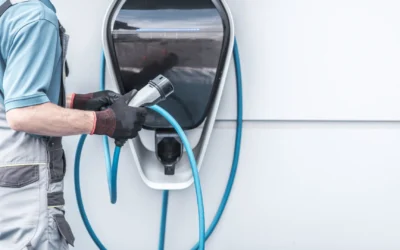Historically, U.S. has been a net importer of natural gas (except for few years) but the recent advancements in the natural gas extraction methods has substantially increased the production in the country to the extent that from 2017 onwards it has become a net exporter.
Where on the other hand increase in the production of natural gas drove down natural gas prices and displaced traditional fuels from energy mix of country. This was followed by continuous increase in electricity generation of gas fired power plants from 2015 onwards and emergence of natural gas as transition fuel.
In this article, I will be discussing natural gas market of U.S. followed by economic and environmental problems that could challenge the status of natural gas as a transition fuel for electricity generation.
Natural Gas Pipeline Network
US has a highly integrated natural gas pipeline network that transports natural gas intra-state and inter-state, from production centers to consumer base. This pipeline network comprises of 3 million miles of mainline and low-pressure gathering pipelines connecting natural gas production areas and storage facilities with consumers.
According to US Energy Administration Agency only in 2019, pipeline network in US delivered around 28.3 trillion cubic feet of natural gas to about 76.9 million customers.
Natural Gas Production
US natural gas production started to pick up after 2005 when horizontal drilling and hydraulic fracturing technologies were introduced which improved the economic viability of recovering gas from tight geological formations notably shale, sandstone, and carbonate.
In 2019, according to EIA, US natural gas production reached around 34 trillion cubic feet which was 9 % more than US natural gas consumption. US has been a net exporter of natural gas from 1950-1956 and from 2017 onwards where in between it has been a net importer of natural gas.

Figure 1: U.S. Natural gas production, consumption, and net imports in trillion cubic feet (1950-2015).
The data used is a property of Energy Information Administration
On-Shore Production
Thirty-five States in US produce natural gas where 5 States in US showed in the table below account for 69 % of total US dry natural gas production. Texas made the highest contribution accounting for 23.9 % of total natural gas production followed by Pennsylvania, Louisiana, Oklahoma, and Ohio contributing 20 %,9.3 %, 8.5 % and 7.7 % respectively.

Figure 2: Major natural gas producing states in U.S (2019).
The data being used is a property of Energy Information Administration
Off-Shore Production
Majority of the natural gas produced in US is produced from on-shore drilling but some offshore have also been drilled into the ocean floors off the coast of US. Total off-shore production of natural gas account for about 1 trillion cubic feet,89 % of which is produced from federal waters in the Gulf of Mexico.
Where the rest of offshore production is from the ocean waters administered by the State of Alabama, California, Alaska and Texas.
Natural gas consumption
Natural gas consumption in U.S. reached 31.10 trillion cubic feet in 2019 as per EIA. Post WWII, natural gas consumption almost doubled from 5.77 trillion cubic feet in 1950 to 11.97 trillion cubic feet in 1960 where natural consumption has increased more than 5 times from 1950-2019.
As far as consumption of natural gas is concerned, majority of it is consumed in the electricity generation accounting for 36 % of total consumption followed by industrial (30 %), residential (16 %), commercial (11 %) and transportation sector (3 %).

Figure 3: Natural gas consumption by sector in U.S.
The data being used is a property of Energy Information Administration
Price Elasticity of Natural Gas
Keeping in view global dependence on energy supplies it is of immense significance to understand how demand of fossil fuel in a certain country or region respond to changes in prices. This variation in the demand of energy with the change in price is referred to as price elasticity of demand. According to a study conducted by Australian National University, price elasticity of demand of natural gas in U.S. in the long run is -1.25 where it is inelastic in the short run.
Environmental Impact of Natural Gas

Figure 4: Fossil fuel emission levels Pounds per Billion Btu of energy input.
Natural gas is one of the cleanest burning fossil fuel compared to coal and oil which are major fuel sources for power plants globally. This is the main reason why in U.S. and otherwise, natural gas has displaced coal and oil as a fuel for power plants along with its cost effectiveness.
CO2 emissions from gas are 40 % lower than coal and 20 % lower than oil as can be seen in figure 3. Where emissions of main air pollutants for instance nitrogen oxides, Sulphur dioxide and particulates are also considerably lower. These air pollutants cause severe health problems and take a serious toll on the economy and quality of life.
If burned in an efficient and new natural gas power plant, natural gas can emit 50-60 % less CO2 when compared with emissions from a new coal power plant.

Figure 5: Global warming potential of greenhouse gases.
Even though emissions due to natural gas combustion are much lower than coal and oil but there is a downside to natural gas as well which needs to be considered to fully understand its environmental impact. That downside is the methane emissions (methane is the primary component of natural gas) along the value chain of natural gas.
Where drilling and extraction of gas from wells and its delivery through pipelines (gathering, mainline and service pipelines) result in leakage of methane which has 28-36 times higher global warming potential as compared to CO2.
These methane leakages have potential to offset relative advantage of natural gas over other fossil fuels.
Therefore, a comprehensive analysis of natural gas’s potential as an alternative fuel needs to take into account leakage rate (assumed), global warming potential of methane (over varying time periods), energy conversion efficiency and some other factors.
As per one study published in ‘Proceedings of National Academy of Sciences of United States of America’, methane losses must be kept under 3.2 % for natural gas power plants to have lower lifecycle emissions than new coal plants over short time period of 20 years or less.
Where according to U.S. Environmental Protection Agency estimates (in 2018), methane emissions from natural gas systems, petroleum systems, abandoned oil/gas wells constituted 29 % of total U.S. methane emissions and 3 % of total greenhouse gas emissions. Under natural gas star program, U.S. Environmental Protection Agency has implemented and recommended technologies to reduce methane emissions. These recommended technologies are employed in compressors/engines, dehydrators, direct inspection and maintenance, pipelines, pneumatic/controls, tanks, valves, and wells in the natural gas sector.
Growth in Natural Gas Fired Generation in U.S.
U.S. in recent years gas observed increase in natural gas fired generation in most regions since 2015. As per EIA, yearly electricity generation from natural gas fired power plants increased by 31 % in the Northeast region, by 20 % in the Central region, by 17 % in the South region between 2015-2019.
Where electric power generation from natural gas declined 1 % in the West region from 2015-2019 as shown in the figure below.

Figure 6: U.S. natural gas fired generation by region in million MWh (Jan 2015-August 2020).
The data used is a property of Energy Information Administration.
U.S. also observed increase in natural gas generation capacity as around 35 GW of net summer capacity was installed from 2015-2019 which accounts for 11 % increase in the aforementioned five-year period. Majority of these power plants were installed in the Northeast region especially in the PJM Interconnection region. PJM is a regional electricity transmission network that coordinates the transmission of wholesale electricity in all or parts of 13 States and District of Columbia.
Looking Forward
Future of natural gas as a transition fuel for power plants rests on the sector’s ability to stay cost effective in the long run as compared to other fossil fuels for instance coal and oil, followed by the effectiveness of natural gas industry in reducing methane leakages from its value chain. Technologies to reduce the methane leakages are available in U.S. but policy intervention which makes deployment of these technologies mandatory is required. Provided the natural gas prices stay low and state level policy intervention keeps methane leakages in check, gas fired generation in U.S. will continue to increase till late 2020s (followed by a steady decline).
More about our Power Grid Market Research
Recent Insights
Key Strategies for EV and EVCI Expansion
The authors, Mike Sheppard, CEO of PTR Inc. & Zainab Shah, Lead EVCI Analyst - Americas, highlight how the U.S. EV and charging infrastructure sectors are navigating a new era shaped by policy shifts and economic pressures. Following the rollback of key federal...
Harnessing the Sun: The Middle East’s Shift to Solar Power and Storage
In this article, PTR's CPO, Saqib Saeed, and Research Analyst, Siddiqa Batool, explain how the Middle East is accelerating its transition toward renewable energy—particularly solar power—supported by a growing focus on energy storage. Countries like Saudi Arabia, the...
Transforming Utilities: The Role Of Digitalization In Shaping The Future Of Energy
Authored by Saad Habib and Hassan Zaheer - In a world where electricity demand is rising—fueled by economic growth, electrification of transport and heating, and rapid renewable integration—utilities face mounting pressure to modernize. Traditional energy systems are...
Advanced Distribution Transformers: Strengthening Europe’s Grid Stability
In the article, the author Maheen Mahmood highlights how Europe’s energy transition is transforming the distribution transformer market, driven by regulatory policies, renewable energy expansion, and advancements in transformer technology. The shift away from fossil...



